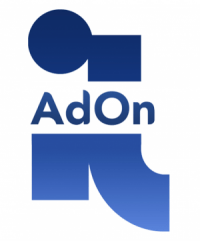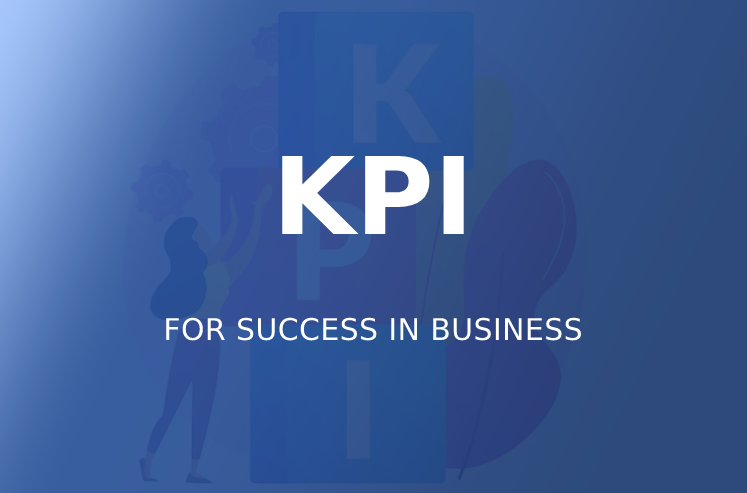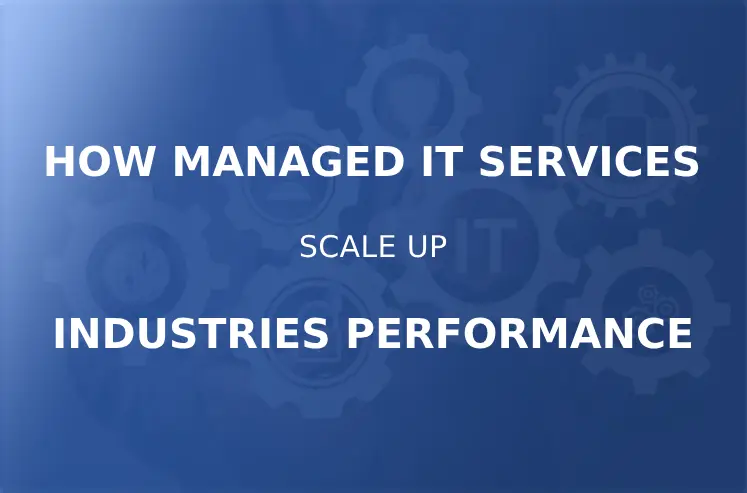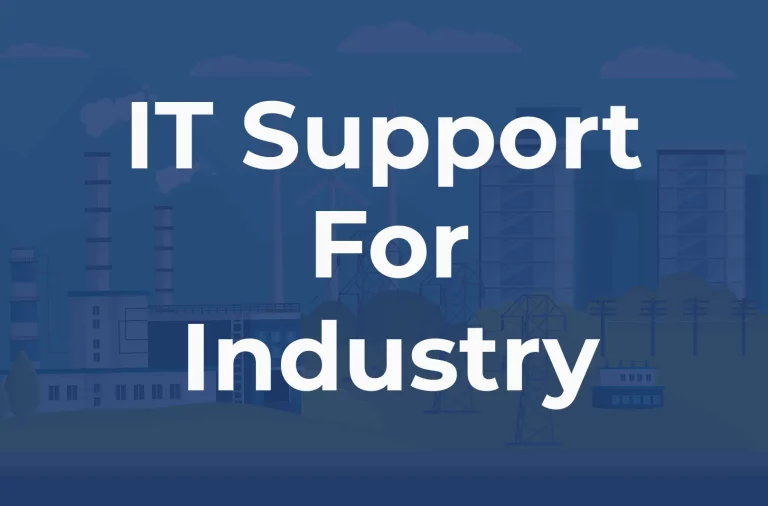Table of Contents

IT solutions speak over generations, products, and services designed to deal with precise disturbing situations or meet the desires of groups and people within the realm of the information era. These solutions encompass a sizable style of all computer services, consisting of software programs, hardware devices, networking infrastructure, and cloud-based services.
One key difficulty of IT solutions is their ability to streamline methods, increase productivity, and improve performance inside companies. For instance, business enterprise beneficial useful resource planning (ERP) systems integrate various enterprise capabilities, which include accounting, human sources, and stock management, into an automated platform, facilitating smoother operations and choice-making.
Security is another essential popularity of IT solutions, particularly in the modern interconnected digital landscape. Solutions, which include antivirus software programs, firewalls, and intrusion detection structures, help shield information and networks from cyber threats, ensuring the confidentiality, integrity, and availability of information.
Moreover, IT solutions play a pivotal role in permitting digital transformation initiatives, allowing groups to conform to evolving marketplace needs and technological advancements. Cloud computing services, for example, provide scalable and flexible infrastructure, empowering corporations to innovate swiftly and cost-effectively set up new packages and offerings.
IT solutions embody a wide array of technologies and offerings geared toward addressing challenges, enhancing productivity, bolstering security, and riding innovation in the virtual age. They are instrumental in assisting corporations to leverage the electricity of the era to achieve their goals and live aggressively in present-day dynamic commercial enterprise surroundings.
Types of IT Solutions

I. Infrastructure Solutions
1. Hardware
Infrastructure IT solutions embody a wide array of bodily components important for constructing and keeping IT environments. This includes servers, which host packages and keep facts, as well as storage devices along with hard drives, stable-kingdom drives (SSDs), and network-attached garage (NAS) systems for storing and retrieving facts.
2. Networking Equipment
Networking infrastructure is important for connecting devices and facilitating conversation within a company. This includes routers, switches, firewalls, and get right of entry to points, which help manipulate visitors, ensure security, and offer connectivity to each local and huge location network (LANs/WANs).
3. Cabling & Connectivity
Top-notch fiber optic, Ethernet, and connector cables as well as other cabling infrastructure are necessary for dependable connectivity. Systems for cabling that are properly planned and executed guarantee effective data transfer and reduce downtime.
II. Software Solutions
1. Applications for Enterprises
CRM ERP and supply chain management SCM systems are examples of software solutions used in the enterprise sector. These programs enable effective resource management and client relations, automate repetitive operations, and streamline company processes.
2. Productivity Software
Productivity suites like Microsoft Office and Google Workspace offer vital gear for creating documents, spreadsheets, shows, and other business communications. These software applications enhance collaboration, communication, and workflow performance within businesses.
3. Specialized Industry Software
Multiple industries have specialized software designed to meet their unique needs. For example, whereas manufacturers rely on computer-aided manufacturing (CAM) and computer-aided layout (CAD) software for product development and manufacturing, healthcare organizations use digital health report (EHR) systems.
III. Cloud Solutions
1. Infrastructure as a Service IaaS
IaaS providers provide virtualized computing resources, which include digital machines, garages, and networking over the Internet. This permits companies to scale their IT infrastructure dynamically without the need for premature capital funding in bodily hardware.
2. Platform as a Service PaaS
PaaS offerings provide a platform for developing, trying out, and deploying programs without the complexity of handling the underlying infrastructure. Developers can leverage pre-constructed frameworks, databases, and development gear to boost the utility development lifecycle.
3. Software as a Service SaaS
SaaS solutions deliver software programs over the internet on a subscription basis. Users can get admission to these packages through an internet browser, eliminating the need for nearby setup and upkeep. Common examples include electronic mail offerings, office productivity suites, and customer support systems.
IV. Security Solutions
1. Antivirus and Antimalware
Antivirus software detects, prevents, and removes malicious software program malware which includes viruses, worms, and ransomware, from computer systems and networks. These IT solutions constantly screen machine interest and experiment files for suspicious behavior or known malware signatures.
2. Firewalls
Firewalls act as a barrier between internal networks and outside threats, controlling incoming and outgoing community traffic based totally on predetermined protection rules. They assist prevent unauthorized entry to sensitive facts and protect against community-primarily based attacks.
3. Intrusion Detection and Prevention Systems (IDPS)
The IDPS solution screens network and system pastime for signs of malicious behavior or protection coverage violations. They can stumble on and reply to threats in real time assisting corporations to become aware of and mitigating safety incidents before they boost.
V. Data Management Solutions
1. Database Management Systems (DBMS)
DBMS software program allows companies to shop, prepare, and retrieve data efficiently. These structures provide features consisting of records indexing, querying, and transaction management, making sure statistics are integrity and accessible.
2. Data Warehousing
Data warehousing solutions consolidate and combine information from more than one source into a centralized repository for analysis and reporting. They allow businesses to take advantage of insights from massive volumes of records and make informed industrial corporation choices.
3. Business Intelligence (BI) Tools
BI platforms offer gear and talents for analyzing and visualizing facts to find trends, patterns, and actionable insights. These IT solutions empower agencies to reveal performance, become aware of opportunities, and power strategic decision-making based totally on information-driven insights.
VI. Communication Solutions
1. Email Services
Email stays a cornerstone of enterprise communique, facilitating inner and external correspondence, file sharing, and collaboration. Email offerings offer capabilities together with encryption, archiving, and integration with productivity gear to decorate verbal exchange efficiency and security.
2. Unified Communications (UC) Platforms
UC solutions integrate numerous verbal exchange channels, consisting of voice, video, messaging, and conferencing, right into a single platform. This enables seamless verbal exchange and collaboration throughout specific gadgets and locations, enhancing productivity and performance.
3. Video Conferencing Tools
With the upward push of remote work and global groups, video conferencing has come to be critical for digital meetings, presentations, and collaboration. Video conferencing tools offer functions along with screen sharing, recording, and integration with calendar and messaging systems to facilitate efficient online meetings.
VII. Integration Solutions
1. Middleware
Middleware serves as an intermediary layer between unique software applications, letting them speak and change records seamlessly. Middleware answers provide messaging, queuing, and integration skills, permitting interoperability and workflow automation across heterogeneous structures.
2. Application Programming Interfaces (APIs)
APIs outline protocols and techniques for constructing and integrating software programs, permitting them to interact with each other and with external offerings. APIs facilitate statistics trade, functionality extension, and integration with 0.33-birthday celebration structures, fostering innovation and collaboration.
3. Integration Platforms as a Service (iPaaS)
iPaaS services provide cloud-based total equipment and offerings for connecting disparate systems, programs, and information resources. These structures provide visible development interfaces, pre-constructed connectors, and workflow automation talents to simplify integration responsibilities and accelerate time-to-cost.
VIII. Managed Services
1. Network Monitoring and Management
Managed service providers (MSPs) offer proactive monitoring and control of community infrastructure to ensure certain uptime, overall performance, and security. This consists of tracking network traffic, troubleshooting connectivity problems, and imposing protection patches and updates.
2. Helpdesk Support
MSPs provide help desk support offerings for giving end-user aid, troubleshooting technical problems, and resolving IT-related queries. The Helpdesk guide may encompass remote help, ticketing structures, and an information base to get admission to to expedite hassle decisions and minimize downtime.
3. Cybersecurity Management
MSPs offer cybersecurity offerings to shield corporations from evolving threats and vulnerabilities. This consists of danger evaluation, protection monitoring, incident response, and implementation of protection first-class practices to guard against data breaches, malware infections, and other security incidents
Importance of IT Solutions

In modern-day digitally-driven international business, the importance of IT solutions cannot be overstated. From streamlining enterprise operations to enabling global connectivity, IT solutions play a pivotal role in enhancing performance, driving innovation, and ensuring competitiveness across industries. These IT solutions encompass a huge variety of technology and services, consisting of software program programs, cloud computing, cybersecurity measures, and communication tools, all aimed at empowering organizations to evolve to evolving market needs and leverage the energy of generations to acquire their dreams. In this increasingly interconnected panorama, the powerful deployment and utilization of IT solutions are essential for groups to thrive and be triumphant in cutting-edge business surroundings.
I. Enhanced Efficiency and Productivity
IT solutions revolutionize the way agencies operate with the aid of automating routine duties, streamlining complex procedures, and empowering personnel with gear to work more effectively. For example, corporation-useful enterprise resource planning (ERP) structures integrate numerous enterprise capabilities with finance, and human sources, and deliver chain management into an unmarried platform. This integration gets rid of reproduction facts entry, reduces manual mistakes, and quickens decision-making methods. Additionally, workflow automation equipment automates repetitive duties, including invoice processing or client onboarding, releasing personnel to focus on strategic initiatives and innovation. Furthermore, task management software offers centralized structures for making plans, scheduling, and monitoring project progress, ensuring that teams collaborate efficiently and tasks are finished on time and within budget.
II. Improved Decision-Making
IT solutions play a pivotal position in permitting records-driven choice-making by imparting agencies with access to widespread amounts of information and sophisticated analytical gear. Business intelligence (BI) platforms combine records from multiple sources, along with income transactions, client interactions, and marketplace developments, and transform them into actionable insights via dashboards, reviews, and visualizations. Advanced analytics strategies, which include predictive modeling and system getting-to-know algorithms, enable groups to forecast future traits, identify rising opportunities, and mitigate risks. Moreover, facts visualization tools make complicated facts units comprehensible to non-technical users, facilitating collaboration and expertise sharing throughout departments. Ultimately, IT solutions empower choice-makers to make knowledgeable, facts-pushed selections that drive enterprise growth and competitive benefit.
III. Enhanced Communication and Collaboration
IT solutions revolutionize the way groups communicate and collaborate, breaking down geographical barriers and permitting actual-time interplay and expertise sharing. Email remains a ubiquitous tool for asynchronous communication, permitting personnel to alternate messages, files, and updates quickly and effectively. Instant messaging and collaboration platforms offer synchronous verbal exchange channels, allowing teams to talk in real time through textual content, voice, or video. Moreover, video conferencing equipment facilitates virtual conferences and presentations, permitting far-off groups to collaborate efficiently and build rapport despite bodily distance. Document control systems and collaboration software program platforms enable groups to proportion, edit, and co-author files in real-time, ensuring that everyone has an entry to modern-day statistics and can make contributions to tasks seamlessly. Overall, IT solutions foster a way of life of collaboration, innovation, and teamwork, using organizational fulfillment.
IV. Global Reach and Market Expansion
IT solutions have transformed the manner in which corporations attain and engage with customers, permitting them to tap into worldwide markets and make their consumer base exponential E-trade structures and online marketplaces provide corporations with digital storefronts to show off services and products to a global audience, facilitating transactions and payments seamlessly. Digital marketing tools, such as search engine optimization, SEO social media marketing, and email campaigns, permit organizations to attain and interact with customers across various virtual channels, thereby increasing logo awareness and purchaser acquisition. Moreover, localization and personalization technologies permit agencies to tailor their offerings to particular markets and customer segments, improving relevance and consumer pleasure. Additionally, logistics and delivery chain control answers optimize the shipping of products and services to clients internationally, making sure of timely achievement and consumer pride. Ultimately, IT solutions empower groups to expand their attainment, increase revenue, and stay aggressive in the worldwide market.
V. Improved Customer Experience
IT solutions are instrumental in delivering super patron studies across diverse touchpoints, using consumer satisfaction, loyalty, and advocacy. Customer relationship management (CRM) systems allow agencies to seize, song, and manipulate patron interactions and relationships correctly. By consolidating patron facts from a couple of channels, along with income, advertising, and customer service, CRM structures provide a holistic view of the client journey, enabling organizations to personalize interactions and count on patron needs. Additionally, self-carrier portals and understanding bases empower customers to discover answers to their questions and remedy issues independently, decreasing reliance on conventional customer support channels. Furthermore, omnichannel communication gear allows companies to interact with clients through a couple of channels, consisting of e-mail, chat, and social media, and make contact, ensuring a steady and seamless enjoyment. Ultimately, IT solutions permit agencies to deliver personalized, well-timed, and relevant studies that foster long-term relationships and power patron loyalty.
VI. Enhanced Security and Risk Management
In an era of growing cyber threats and record breaches, IT solutions are crucial for protecting sensitive information, infrastructure, and highbrow property from unauthorized admission to, malicious attacks, and factual breaches. Security answers, which encompass firewalls, intrusion detection and prevention structures (IDPS), and antivirus software, protect networks, endpoints, and facts from outside threats. Encryption technology guards data both at relaxation and in transit, making sure of confidentiality and integrity. Identity and access manipulation (IAM) answers control consumer access to property and packages, decreasing the risk of insider threats and unauthorized access to the right of entry. Moreover, protection attention education educates personnel about cybersecurity top-notch practices and empowers them to recognize and reply to potential threats successfully. Additionally, incident reaction and catastrophe restoration plans permit organizations to mitigate the impact of safety incidents and resume normal operations quickly. Ultimately, IT solutions play an essential role in mitigating protection dangers and making sure of commercial enterprise continuity in the face of evolving threats and vulnerabilities.
VII. Agility and Adaptability
IT solutions empower companies to evolve quickly to adapt to market dynamics, purchaser demands, and technological advancements, enabling them to maintain a competitive aspect in contemporary fast-paced enterprise surroundings. Cloud computing enables companies to scale resources dynamically, innovate unexpectedly, and set up new offerings and applications quickly. Agile development methodologies, such as Scrum and Kanban, sell iterative and incremental improvement, allowing groups to respond to changing necessities and supply costs to clients extra often. Moreover, modular IT architectures and microservices enable businesses to decouple packages and offerings, making them extra flexible, scalable, and resilient. DevOps practices promote collaboration and automation among development and operations teams, accelerating the delivery of superb software and services. Ultimately, IT solutions allow organizations to conform to marketplace modifications, capitalize on emerging opportunities, and stay ahead of the competition.
VIII. Cost Optimization and Resource Efficiency
IT solutions assist organizations optimize costs, reducing waste, and maximizing useful resource usage through automation, virtualization, and optimization strategies. Cloud computing allows groups to shift from capital-in-depth to operational expenditure models, paying the handiest for the resources they devour on a pay-as-you-go foundation. Virtualization technology, consisting of server virtualization and computer virtualization, consolidates hardware sources and enhances usage prices, decreasing hardware and energy prices. Additionally, software programs as a carrier (SaaS) and controlled offerings provide admission to software program packages and IT infrastructure on a subscription basis, doing away with advanced investments in software licenses and hardware. Furthermore, IT asset management (ITAM) solutions help agencies track and control their IT belongings all through their lifecycle, optimizing procurement, utilization, and disposal. Ultimately, IT answers permit groups to attain price savings, enhance aid efficiency, and reinvest financial savings into strategic projects that force enterprise growth and innovation
IT Solutions Consulting Services
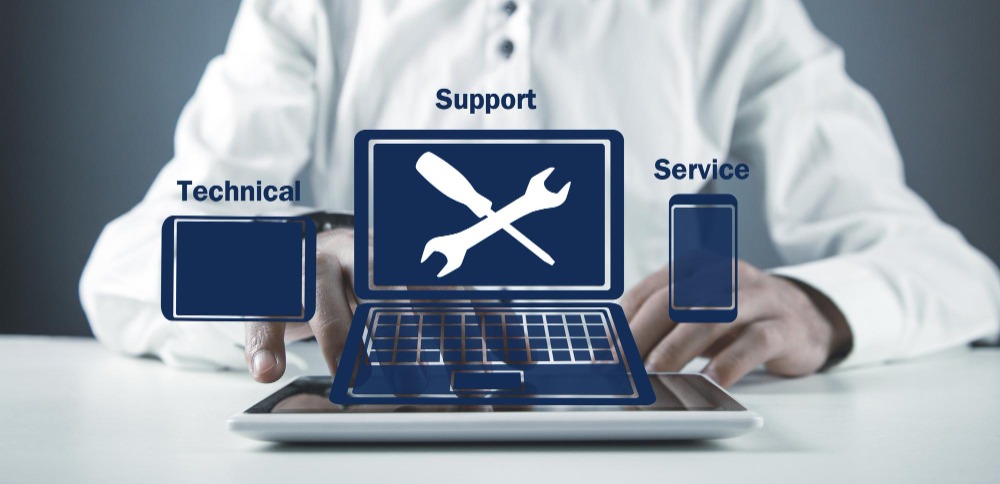 IT solutions consulting offerings offer expert steerage and guide to organizations searching to leverage technology to acquire their commercial enterprise goals. These consulting corporations provide some offerings tailor-made to the unique needs and demanding situations of their customers, including
IT solutions consulting offerings offer expert steerage and guide to organizations searching to leverage technology to acquire their commercial enterprise goals. These consulting corporations provide some offerings tailor-made to the unique needs and demanding situations of their customers, including
1. Strategic Planning
Strategic making is an essential provider furnished using IT solution company to groups aiming to optimize their technological infrastructure and align it with their commercial enterprise targets. Here’s an extra designated breakdown of how this method generally unfolds:
2. Assessment of Current IT Infrastructure
Consulting companies begin by carrying out a radical evaluation of the business enterprise’s current IT infrastructure. This entails evaluating hardware, software, community architecture, protection protocols, and IT rules and procedures. The purpose is to benefit from a complete knowledge of the business enterprise’s IT panorama, including strengths, weaknesses, possibilities, and threats.
3. Identification of Areas for Improvement
Based on the evaluation findings, experts become aware of areas in the IT infrastructure that require improvement or optimization. This may additionally include old hardware, inefficient strategies, security vulnerabilities, compliance gaps, or technology gaps hindering business operations.
4. Analysis of Business Goals and Objectives
Consultants work intently with key stakeholders, which include executives, branch heads, and IT personnel, to understand the enterprise’s average business goals, targets, and strategic priorities. They discover how generations can assist and allow those dreams, whether it’s improving operational efficiency, enhancing patron stories, increasing market attainment, or using innovation.
5. Development of IT Strategy and Roadmap
Drawing on the assessment findings and alignment with commercial enterprise goals, specialists expand a complete IT strategy and roadmap. This strategic plan outlines the imagination and prescience for the enterprise’s future IT structure, such as recommended IT solutions, tasks, and initiatives. It prioritizes projects based totally on their effect, feasibility, and alignment with business priorities.
6. Implementation Planning and Execution
Once the IT strategy and roadmap are finalized, consultants collaborate with the business enterprise’s leadership group to expand targeted implementation plans. These plans consist of timelines, resource necessities, price range estimates, danger mitigation strategies, and overall performance metrics. Consultants may also offer challenge management help or oversee the execution of key tasks to ensure they’re finished efficiently and on schedule.
7. Continuous Monitoring and Optimization
IT solution consulting corporations recognize that generation is dynamic and evolving, requiring ongoing tracking and optimization to stay effective. Consultants set up mechanisms for monitoring the implementation of the IT strategy, tracking key overall performance signs (KPIs), and figuring out opportunities for non-stop improvement. They work closely with the company to adapt to changing commercial enterprise desires, emerging technologies, and industry trends.
I. Technology Assessment and Selection
Technology evaluation and selection is a crucial provider offered by IT consultants, permitting corporations to make knowledgeable selections about the adoption of the latest technologies and answers. Here’s a more detailed look at this process:
1. Needs Assessment
Consultants start by carrying out an intensive wish evaluation in collaboration with key stakeholders inside the enterprise. This involves knowledge of the company’s precise necessities, objectives, and constraints related to era adoption. Consultants acquire entries from various departments and purposeful areas to ensure that every relevant perspective is taken into consideration.
2. Evaluation Criteria Definition
Based on the needs assessment, consultants work with the company to outline assessment criteria for assessing capability, technology, and IT solutions. These criteria commonly encompass elements that include capability, scalability, interoperability, safety, ease of use, seller reputation, and total cost of ownership (TCO). The standards are tailored to align with the business enterprise’s priorities and targets.
3. Market Research and Analysis
Consultants conduct thorough marketplace studies to pick out capability technology and IT solutions that meet the described evaluation standards. This may involve reviewing enterprise reviews, analyst opinions, supplier websites, product demos, and patron testimonials. Consultants leverage their know-how and industry information to discover emerging developments, excellent practices, and progressive IT solutions that can apply to the agency’s wishes.
II. Vendor Evaluation and Comparison
Consultants assist groups in comparing and evaluating special providers and their services against the defined evaluation criteria. This may additionally involve asking for proposals, engaging in dealer demonstrations, and comparing dealer abilities, references, and pricing fashions. Consultants facilitate objective opinions and offer insights to help companies make informed selections.
1. Proof of Concept (POC) or Pilot Testing
In a few cases, specialists may additionally endorse undertaking proof-of-concept (POC) or pilot testing to validate the feasibility and effectiveness of decided technologies in real-world surroundings. This permits corporations to assess the overall performance, functionality, and usability of the technologies before making a very final decision. Consultants assist in planning and executing POCs or pilot assessments and examine the effects to inform decision-making.
2. Recommendations and Decision Support
Based on the evaluation method and findings, specialists provide recommendations and choice aid to the agency’s management crew. This includes offering an in-depth analysis of the pros and cons of each option, highlighting key considerations, risks, and trade-offs, and making actionable guidelines aligned with the employer’s goals and priorities.
3. Implementation Support
Once a technology choice has been made, experts can also keep offering aid at some point in the implementation segment. This may also include supporting seller negotiations, settlement evaluation, project planning, and stakeholder verbal exchange. Consultants ensure a clean transition and help mitigate risks related to generational adoption.
III. System Integration and Implementation
System integration and implementation services supplied with the aid of IT answer consulting companies play a critical role in helping companies leverage new technologies to enhance performance and gain enterprise targets. Here’s a detailed assessment of the ways these companies assist corporations throughout the mixing and implementation process:
1. Planning and Design
Consultants paint carefully with the enterprise’s stakeholders to apprehend their requirements, goals, and constraints associated with machine integration and implementation. Based on this expertise, consultants create a comprehensive integration and implementation plan, outlining the scope, timeline, assets, and milestones for the mission. They lay out the structure and configuration of the new IT systems and IT solutions to ensure seamless integration with current infrastructure and alignment with commercial enterprise dreams.
2. Vendor Selection and Procurement
Consultants assist companies in selecting and purchasing the necessary hardware, software, and offerings from carriers. They examine vendor proposals, negotiate contracts, and make sure that decided carriers meet the employer’s necessities in terms of capability, reliability, scalability, and fee effectiveness. Consultants may additionally provide guidance on licensing agreements, service level agreements (SLAs), and implementation timelines.
3. Customization and Development
Depending on the corporation’s precise desires, specialists may additionally customize or expand software program applications, interfaces, or integrations to facilitate the combination and implementation system. This may additionally involve writing custom code, configuring off-the-shelf software, or developing middleware IT solutions to bridge the gap between one-of-a-kind systems and technology. Consultants ensure that customizations align with commercial enterprise necessities and adhere to exceptional practices and industry standards.
4. Deployment and Testing
Consultants manipulate the deployment of the latest IT systems and IT solutions, overseeing the installation, configuration, and setup systems to make sure that everything is applied effectively. They conduct comprehensive testing to verify the functionality, overall performance, and interoperability of the integrated structures. This consists of unit trying out, integration checking out, system trying out, and user acceptance testing (UAT) to identify and remedy any issues or insects before going live.
5. Training and Change Management
Consultants provide education and alternate management assistance to help personnel adapt to the new IT system and workflows. They broaden training materials, conduct consumer training classes, and provide ongoing support and guidance to ensure a smooth transition. Consultants also work closely with organizational leaders to deal with any resistance to and promote the adoption of the new systems and tactics.
6. Go-Live and Support
Consultants oversee the go-stay section of the challenge, making sure that the new IT system and IT solutions are successfully deployed and operational. They provide post-implementation aid and troubleshooting to deal with any issues or demanding situations that arise during the transition period. Consultants might also increase aid documentation, set up support channels, and offer education to internal aid teams to ensure ongoing renovation and guidance of the included structures.
7. Custom Software Development
Custom software program development offerings furnished by IT consultants offer organizations the possibility to cope with their specific necessities and streamline precise commercial enterprise processes. Here’s a detailed review of the ways these services work:
8. Requirement Gathering and Analysis
Consultants begin undertaking in-depth discussions with key stakeholders in the organization to apprehend their precise desires, demanding situations, and desires. They accumulate necessities related to functionality, personal enjoyment, integration with present systems, security, scalability, and overall performance.
9. Solution Design and Architecture
Based on the accumulated necessities, specialists work collaboratively with the enterprise to design an answer structure that meets their desires. They define the system’s standard shape, components, modules, and fact flows, ensuring alignment with excellent practices, enterprise requirements, and destiny scalability requirements.
10. Development and Coding
Consultants utilize their knowledge in software development to construct custom IT solutions tailor-made to the employer’s requirements. They write code, broaden software modules, and enforce functions per the agreed-upon specifications and layout. Consultants observe coding requirements, version control practices, and nice guarantee processes to ensure the reliability, maintainability, and security of the software program.
11. Testing and Quality Assurance
Throughout the development technique, experts conduct rigorous attempts to become aware of and address any defects, mistakes, or inconsistencies in the software program. This includes unit testing, integration checking out, gadget testing, and user acceptance (UAT) to make certain that the software program meets the agency’s necessities and plays as predicted in real-global situations.
12. Deployment and Implementation
Once the software development is complete and testing is a hit, specialists help with deploying the custom software into the corporation’s manufacturing surroundings. They oversee the installation, configuration, and setup procedures, ensuring an easy transition from improvement to manufacturing. Consultants may also provide training and support to help customers understand and utilize the new software correctly.
13. Maintenance and Support
Following deployment, experts offer ongoing upkeep and guidance to ensure the continued functionality and performance of the custom software program. They screen the system’s overall performance, deal with any issues or insects that stand up, and provide updates and upgrades as they adapt to changing enterprise necessities or technology improvements.
14. Continuous Improvement
Consultants work collaboratively with the corporation to continuously evaluate and enhance the custom software program based on user remarks, evolving commercial enterprise wishes, and rising technologies. They become aware of possibilities for optimization, upgrades, or new features that may enhance the performance, effectiveness, and value of the software program over time.
IV. Cybersecurity Consulting

Cybersecurity consulting offerings supplied by IT solutions consulting corporations are important in assisting organizations in protecting their treasured belongings, sensitive facts, and infrastructure from evolving cyber threats. Here’s a detailed evaluation of the offerings generally provided in cybersecurity consulting:
1. Cybersecurity Assessment and Risk Analysis
Consultants start by undertaking a complete evaluation of the employer’s cybersecurity posture, including its systems, networks, programs, and regulations. They identify capacity vulnerabilities, weaknesses, and gaps inside the existing safety features. Consultants additionally analyze the organization’s risk publicity and capability impact of cyber threats on its operations, reputation, and regulatory compliance.
2. Penetration Testing
Penetration checking out, also referred to as ethical hacking, entails simulating actual-world cyber attacks to pick out and exploit the most vulnerabilities within the employer’s structures and networks. Consultants use a mixture of automatic equipment and manual strategies to assess the security controls and defenses in the location and determine the effectiveness of the enterprise’s protection posture. They offer special reports and hints for remediation to strengthen the corporation’s defenses against capability threats.
3. Vulnerability Assessments
Vulnerability exams involve figuring out and prioritizing vulnerabilities within the agency’s systems, packages, and infrastructure. Consultants use specialized gear and strategies to test for acknowledged vulnerabilities, misconfigurations, and weaknesses that could be exploited by attackers. They examine the severity and probability of exploitation for each vulnerability and provide pointers for remediation based on threat mitigation strategies.
4. Security Audits and Compliance Assessments
Consultants conduct safety audits and compliance checks to evaluate the company’s adherence to industry standards, rules, and first-rate practices associated with cybersecurity. They assess safety rules, procedures, and controls to ensure compliance with applicable legal guidelines, which include GDPR, HIPAA, PCI DSS, and the NIST cybersecurity framework. Consultants offer guidance on reaching and retaining compliance and dealing with any gaps or deficiencies recognized at some point in the audit method.
5. Security Architecture and Design
Consultants help companies design and impose strong protection architectures that align with their business goals and risk tolerance. They expand safety frameworks, reference architectures, and layout concepts to guide the improvement and implementation of stable structures and programs. Consultants also offer guidance on selecting and integrating security technologies and answers that cope with the agency’s particular desires and requirements.
6. Incident Response and Crisis Management
In the event of a cybersecurity incident or breach, experts offer incident reaction and disaster management services to assist companies in containing the threat, minimizing damage, and repairing normal operations. They broaden incident response plans, playbooks, and processes to facilitate a coordinated and powerful response to cyber incidents. Consultants additionally conduct publish-incident evaluations and instructions discovered periods to become aware of areas for improvement and enhance the employer’s resilience to future threats.
7. Security Awareness Training
Consultants provide protection education applications to train personnel about cybersecurity practices, threats, and dangers. They broaden customized training substances, e-gaining knowledge of modules, and interactive workshops to elevate focus and foster a way of life of safety focus within the business enterprise. Consultants additionally conduct phishing simulations and different physical activities to test employees’ readiness to apprehend and reply to protection threats.
V. Cloud Migration and Optimization
Cloud migration and optimization offerings offered by IT consultants are critical in helping groups harness the benefits of cloud computing, ensuring an unbroken transition, and maximizing the performance of their cloud infrastructure. Here’s an in-depth assessment of how those offerings usually unfold:
1. Assessment of Current Infrastructure
Consultants begin by engaging in a comprehensive evaluation of the organization’s current IT infrastructure, inclusive of hardware, software, and programs. They examine workloads, data storage requirements, overall performance metrics, and safety concerns to decide the suitability of migrating to the cloud.
2. Cloud Readiness Assessment
Consultants examine the employer’s readiness for cloud migration, considering elements such as the existing technology stack, community connectivity, regulatory compliance requirements, and organizational subculture. They perceive capability challenges, dangers, and possibilities associated with migrating to the cloud and increase techniques to cope with them.
3. Selection of Cloud Services and Providers
Based on the evaluation findings and organizational requirements, specialists assist in selecting the most suitable cloud offerings and providers for the organization’s desires. They examine elements along with provider offerings, pricing fashions, overall performance ensures, statistics residency, compliance certifications, and security capabilities to make informed decisions.
4. Migration Planning and Strategy
Consultants work with the corporation to develop a comprehensive migration plan and method tailored to their particular requirements and targets. This consists of defining migration priorities, timelines, useful resource allocations, and hazard mitigation strategies. Consultants identify which workloads and packages are appropriate for migration, in addition to any dependencies or interdependencies that want to be addressed.
5. Data Migration and Transfer
Consultants oversee the migration of data and applications from on-premises environments to the cloud, ensuring record integrity, protection, and compliance throughout the system. They use specialized migration gear and techniques to switch facts successfully and decrease downtime or disruption to business operations. Consultants also guide information encryption, statistics protection, and statistics residency necessities to ensure compliance with regulatory standards.
6. Infrastructure Provisioning and Configuration
Consultants assist in provisioning and configuring cloud infrastructure assets, inclusive of digital machines, storage, networking, and safety services, to satisfy the agency’s requirements. They optimize aid usage, overall performance, and fee effectiveness with the aid of leveraging cloud-local services and automation gear. Consultants also offer pointers for enforcing pleasant practices for safety, scalability, and resilience in the cloud surroundings.
VI. Optimization and Cost Management
Consultants help corporations optimize their cloud infrastructure and offerings to maximize efficiency and decrease expenses. They examine usage styles, overall performance metrics, and billing records to become aware of opportunities for optimization, consisting of rightsizing times, optimizing garage stages, and imposing value-saving measures. Consultants additionally offer suggestions for enforcing governance rules, monitoring tools, and fee management techniques to hold price effectiveness over time.
1. Training and Knowledge Transfer
Consultants offer education and understanding to empower the company’s IT staff and stakeholders to control and function the cloud surroundings effectively. They offer workshops, documentation, and hands-on education sessions to familiarize customers with cloud technologies, gear, and great practices. Consultants also offer ongoing support and steerage to deal with any demanding situations or questions that arise for the duration of the transition and past.
VII. Managed IT Services
Managed IT solutions furnished through consulting companies offer agencies a cost-effective and green manner to control their IT infrastructure and help their needs. Here’s an in-depth evaluation of the services generally presented as part of managed IT services:
1. Network Monitoring and Management
Managed IT services and consulting companies screen the business enterprise’s community infrastructure 24/7 to make certain the most beneficial overall performance, availability, and security. They use superior tracking gear and techniques to stumble on and troubleshoot network troubles, inclusive of bandwidth congestion, network latency, and tool screw-ups before they impact enterprise operations. Managed IT service companies also proactively manage community devices, such as routers, switches, and firewalls, and get admission to points, to make certain they’re nicely configured, up to date, and patched against security vulnerabilities.
2. Helpdesk and End-User Support
Managed IT service companies offer helpdesk aid to address end-user technical problems and requests in a well-timed and green way. They provide faraway assistance, troubleshooting, and determination for not-unusual IT issues, inclusive of software program mistakes, hardware failures, password resets, and connectivity troubles. Managed IT service vendors also provide self-provider portals and expertise bases to empower customers to find IT solutions to their questions and remedy problems independently.
3. System Administration and Maintenance
Managed IT service providers take care of recurring gadget administration responsibilities to ensure the steadiness, security, and overall performance of the agency’s IT infrastructure. This consists of responsibilities including server tracking, patch control, software updates, backup and disaster recovery, and personal account control. Managed IT solutions providers also implement protection rules and get the right of entry to controls to defend touchy records and mitigate security risks.
VIII. Cybersecurity Management
Managed IT service providers help agencies enhance their cybersecurity posture and shield them from evolving cyber threats. They install and control security technologies and answers, which include firewalls, intrusion detection and prevention structures (IDPS), antivirus software, and email safety gateways, to safeguard against malware, phishing attacks, and other cyber threats. Managed IT service companies additionally conduct normal safety exams, vulnerability scans, and penetration checks to pick out and deal with safety weaknesses proactively.
1. Cloud Services Management
Managed IT services providers help agencies cope with their cloud services and environments, along with cloud infrastructure, systems, and programs. They oversee the provisioning, configuration, and optimization of cloud resources to ensure they meet the business enterprise’s overall performance, scalability, and safety requirements. Managed IT services providers also display cloud utilization, expenses, and overall performance metrics to optimize useful resource utilization and limit cloud costs.
2. Vendor Management and Procurement
Managed IT service providers act as an unmarried factor of touch for coping with relationships with IT vendors and providers. They handle vendor negotiations, contract control, and procurement sports to make certain the business enterprise gets the best price for its IT investments. Managed IT services providers additionally stay abreast of the latest technology and traits within the IT industry to propose and implement modern IT solutions that align with the enterprise’s dreams and goals.
IX. Training and Support
Training and assistance services supplied via IT consultants are vital for agencies to maximize the benefits of their IT investments and empower their employees to successfully make use of IT solutions. Here’s an in-depth evaluation of the way these offerings usually unfold:
1. Needs Assessment and Training Planning
Consultants start by engaging in a needs assessment to perceive the education necessities of the company and its personnel. They analyze the company’s IT infrastructure, software packages, and commercial enterprise procedures to decide the areas wherein education and help are wanted. Based on this assessment, consultants broaden a custom-designed training plan that addresses the precise needs and goals of the enterprise.
2. Technical Training Programs
Consultants design and deliver technical training packages tailor-made to the agency’s IT environment and generation stack. These applications cover topics that include software packages, operating systems, networking, cybersecurity, and cloud computing. Training classes may be performed in character, in reality, or through e-mastering systems, depending on the business enterprise’s alternatives and requirements. Consultants make use of quite a few academic techniques, which include lectures, demonstrations, palms-on sporting events, and simulations, to decorate mastering effectiveness and engagement.
3. User Workshops and Skill Development
Consultants conduct consumer workshops and talent development sessions to empower employees with the knowledge and skills needed to efficiently make use of IT solutions in their daily paintings. These workshops awareness on realistic, hands-on training to assist customers become gifted in the usage of software applications, tools, and structures relevant to their roles and duties. Consultants offer steerage on satisfactory practices, pointers, and shortcuts to decorating productivity and efficiency.
4. Ongoing Support and Helpdesk Services
Consultants provide ongoing guides and helpdesk offerings to address employees’ questions, problems, and worries related to IT solutions. They offer well-timed help and troubleshooting for technical problems, software errors, and personal queries via various support channels, including cell phone, email, chat, or ticketing systems. Consultants try to remedy troubles quickly and effectively to limit downtime and disruption to business operations.
5. Documentation and Knowledge Sharing
Consultants create documentation and information repositories to facilitate self-service guides and information sharing amongst personnel. They develop user guides, manuals, FAQs, and understanding-based articles that offer step-through-step instructions, troubleshooting hints, and pleasant practices for the successful use of IT solutions. Consultants inspire employees to get the right of entry to these sources independently to locate IT solutions to their questions and solve issues without relying on outside support.
6. Feedback and Continuous Improvement
Consultants are trying to find feedback from personnel on the effectiveness of schooling and guide offerings and use this feedback to make improvements and changes as needed. They conduct surveys, interviews, and evaluations to collect information from users about their schooling studies, challenges, and guidelines for development. Consultants constantly refine schooling materials, transport strategies, and assist procedures to decorate the general gaining knowledge of enjoying and coping with evolving needs.
Managed IT Solutions

Managed IT solutions contain outsourcing the control of an enterprise’s IT infrastructure and offerings to a third-celebration provider. This complete technique encompasses quite several services, inclusive of community monitoring, helpdesk assistance, machine management, cybersecurity control, and cloud offerings management. By leveraging the information and assets of managed IT services provider companies, organizations can offload the load of IT management and support, allowing them to pay attention to middle enterprise sports. Managed IT solutions provider gives scalability, flexibility, and price effectiveness, as organizations can tailor offerings to their precise wishes and pay for what they use. Additionally, controlled IT solutions provide proactive tracking, rapid reaction to issues, and ongoing upkeep and optimization to ensure the reliability, safety, and performance of IT systems and services. Overall, managed IT solutions permit agencies to beautify productivity, reduce operational prices, and mitigate dangers related to IT management, even freeing up inner assets to focus on strategic projects and innovation.
Business IT Solutions

Business IT solutions encompass a diverse range of technologies, services, and techniques designed to cope with the precise wishes and challenges of current companies. These answers goal to decorate efficiency, productivity, and competitiveness via leveraging generation to streamline operations, enhance selection-making, and pressure innovation. Business IT support might also encompass software applications, hardware infrastructure, cloud computing services, cybersecurity measures, communique gear, and IT consulting solutions tailored to the unique necessities of every enterprise. By investing in enterprise IT solutions, businesses can optimize strategies, reduce charges, and reap their strategic goals more efficiently in modern virtual financial systems.
IT Support Solutions
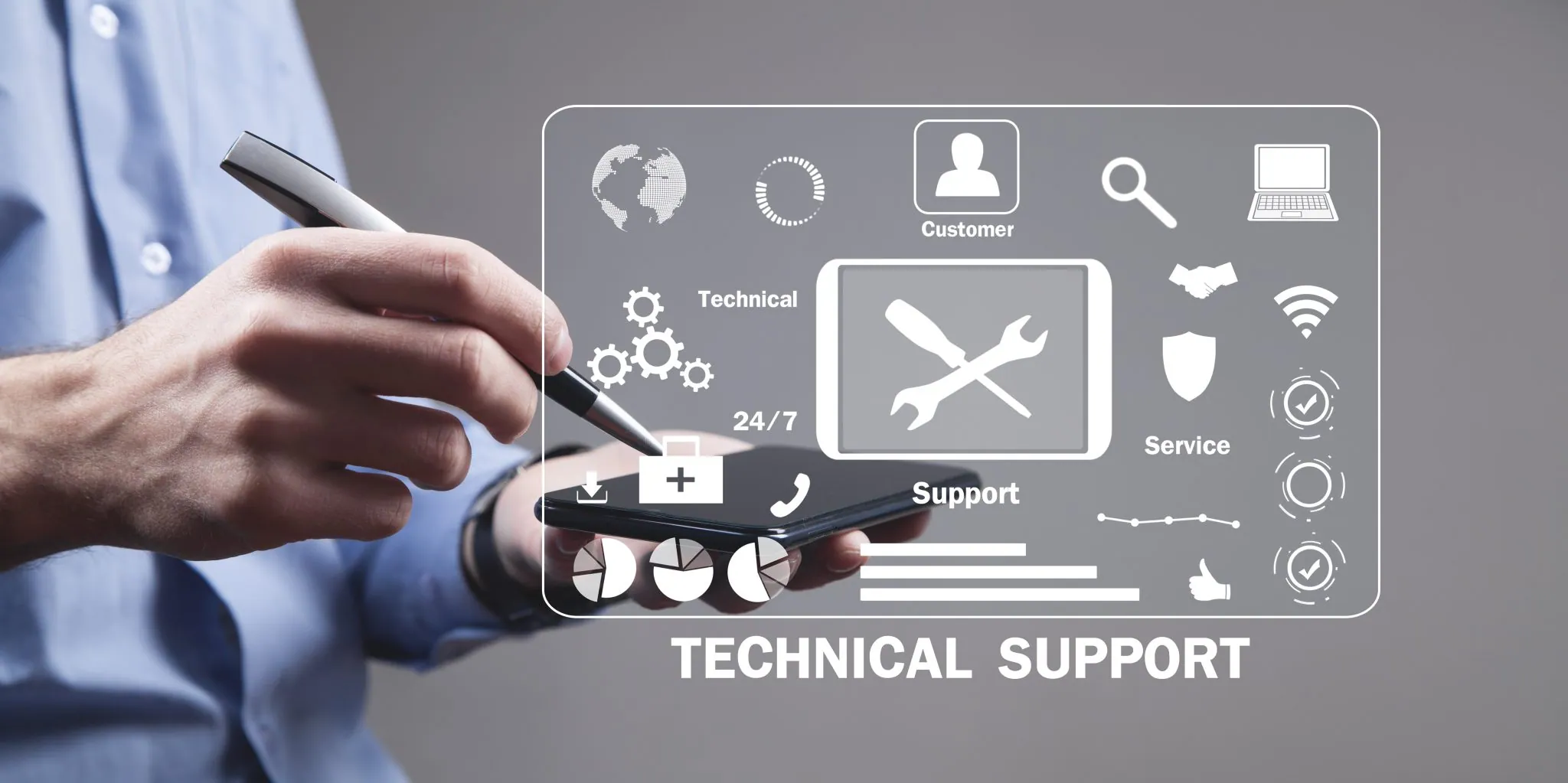
IT support solutions confer with the variety of services and resources supplied to groups to ensure the smooth operation and maintenance of their IT infrastructure and structures. These IT solutions embody numerous components of technical assistance, troubleshooting, and troubleshooting to cope with issues promptly and correctly. IT support companies can also encompass help desk help, faraway assistance, on-website help, device tracking, maintenance, and software program updates. Additionally, IT support solutions regularly involve proactive measures such as preventive preservation, protection monitoring, and everyday backups to prevent capacity troubles and limit downtime. The intention of IT solutions is to offer agencies reliable, responsive, and efficient assistance to keep their IT system running easily, reduce disruptions, and maximize productivity.
IT Solutions for Small Businesses

Double exposure of businessman working with business solution diagram and digital cloud network concept. IT solutions for small groups are tailored to satisfy the particular needs and constraints of smaller groups, offering price-powerful and greenways to leverage technology to power growth and success. These IT solutions encompass numerous offerings and technology designed to enhance efficiency, enhance productiveness, and streamline operations for small companies. Some key IT solutions for small businesses include.
I. Cloud Computing Services
Cloud computing offers small companies access to scalable and lower priced computing assets, which includes garage, processing strength, and software program programs, without the need for good sized prematurely investment in hardware or infrastructure. Cloud-based solutions allow small companies to leverage agency-stage generation, enhance collaboration, and get the right of entry to records and programs from everywhere with a web connection.
II. Software as a Service (SaaS)
SaaS answers offer small groups with the right of entry to an extensive variety of software applications and equipment on a subscription basis. These IT solutions get rid of the need for upfront software program licensing fees and reduce the weight of software program upkeep and updates, making them fee-effective and smooth to apply. Popular SaaS applications for small businesses include customer relationship management (CRM) systems, accounting software programs, mission control tools, and collaboration structures.
III. Cybersecurity Solutions
Small organizations are increasingly targeted by cyber threats, making cybersecurity answers important for protecting sensitive data, high-brow belongings, and customer data. IT solutions for small agencies may also consist of antivirus software, firewalls, intrusion detection structures, and encryption equipment to shield in opposition to cyber assaults and data breaches. Additionally, worker education and protection awareness programs assist teach the workforce approximately ability threats and nice practices for retaining stable computing surroundings.
IV. Managed IT Services
Managed IT service providers offer small agencies entry to a group of IT experts who can control and help their IT infrastructure and systems. These services might also consist of community tracking, helpdesk support, system renovation, and cybersecurity control, imparting small organizations with the know-how and assets they need to maintain reliable and steady IT surroundings without the overhead of an in-residence IT team.
V. Website Development and Digital Marketing
A powerful online presence is vital for small corporations to attract clients and compete in today’s digital marketplace. Its answers for small agencies may additionally include internet site improvement offerings to create professional and user-pleasant websites that exhibit IT solutions and services and products. Additionally, digital advertising solutions, which include search engine optimization (SEO), social media marketing, and email marketing, help small groups reach their audience and drive site visitors to their websites.
VI. Data Backup and Recovery Solutions
Small corporations rely on data to run their operations, making information backup and healing solutions critical for protection against records loss due to hardware failure, human mistakes, or cyber assaults. IT solutions for small groups may consist of automated backup answers, cloud storage services, and disaster recovery planning to make certain that crucial facts are subsidized often and may be quickly restored in the event of a statistics loss incident.
IT solutions for small corporations offer cost-effective and scalable approaches for small businesses to leverage technology to improve efficiency, beautify productivity, and compete in modern-day virtual economic systems. By making an investment in the right IT solutions, small organizations can streamline operations, lessen costs, and role themselves for lengthy-term achievement.
Corporate IT Solutions
Corporate IT solutions encompass a complete range of technology, offerings, and techniques designed to fulfill the complicated and evolving IT desires of large organizations. These IT solutions are tailor-made to help the numerous necessities of company environments, which include scalability, safety, compliance, and overall performance. Some key components of corporate IT solutions include
I. Enterprise Resource Planning (ERP) Systems
Enterprise Resource Planning (ERP) systems are complete software solutions that integrate and streamline core enterprise tactics inside an agency. These techniques commonly include finance, human resources, supply chain control, and consumer courting control. By consolidating those functions right into a single, unified platform, ERP systems provide agencies with a centralized repository of records and standardized tactics, permitting efficient communique and collaboration throughout departments.
The implementation and customization of ERP systems are regularly key additives of company IT solutions. During implementation, ERP structures are configured to satisfy the unique wishes and requirements of the enterprise, such as customization of workflows, statistics structures, and person interfaces. This customization guarantees that the ERP system aligns with the business enterprise’s specific commercial enterprise methods and objectives.
ERP systems provide numerous benefits to businesses, such as streamlined operations, improved performance, and advanced selection-making skills. By integrating disparate systems and automating manual techniques, ERP systems lessen redundancy, reduce errors, and grow productivity throughout the company. Additionally, ERP gadgets provide real-time access to facts and analytics, permitting records-pushed preference-making and strategic planning.
ERP systems play a crucial function in corporate IT solutions by presenting groups with a centralized platform to manipulate and optimize their core commercial enterprise approaches. By enforcing and customizing ERP structures, organizations can streamline operations, enhance performance, and drive a boom in the modern-day competitive business landscape.
II. Customer Relationship Management (CRM) Systems
Customer Relationship Management (CRM) systems are software solutions designed to help businesses successfully manage and analyze interactions with modern and capable customers in the course of the purchaser lifecycle. These systems provide a centralized platform for storing and having access to patron records, allowing groups to track interactions, manage relationships, and drive sales advertising and marketing efforts.
Corporate IT solutions frequently encompass the implementation of CRM systems to streamline consumer dating control processes and improve overall business performance. Some key capabilities and benefits of CRM systems include
III. Centralized Customer Information
CRM systems serve as a centralized repository for storing consumer facts, which include touch information, purchase records, communication alternatives, and interactions with the business enterprise through numerous channels. Having all client information in a single region permits personnel to get admission to up-to-date records and gain insights into purchaser behavior and alternatives.
1. Sales and Marketing Automation
CRM systems automate income and advertising strategies, such as lead control, possibility monitoring, and marketing campaign control. By automating repetitive responsibilities and workflows, CRM systems assist income and advertising groups shop time, improve efficiency, and consciousness of excessive-cost activities, inclusive of building relationships and final deals.
2. Enhanced Customer Service and Support
CR systems enables agencies to offer personalized and responsive customer service with the aid of tracking patron inquiries, troubles, and requests. Through capabilities including ticketing systems, case management, and expertise bases, CRM systems help guide teams to manage customer interactions more successfully, remedy issues speedy, and deliver remarkable client reviews.
3. Analytics and Reporting
CRM systems offer sturdy analytics and reporting capabilities that allow organizations to tune key performance metrics, look at customer records, and generate insights to inform choice-making. By leveraging data-pushed insights, groups can emerge as privy to traits, forecast income, degree campaign effectiveness, and optimize agency strategies to better serve their customers and achieve their desires.
CRM systems play a critical function in corporate IT solutions by enabling companies to centralize client facts, automate income advertising and marketing methods, and decorate customer support and help. By imposing CRM systems, companies can enhance customer relationships, boost sales productivity, and pressure commercial enterprises to increase in a trendy aggressive market.
IV. Business Intelligence and Analytics
Business Intelligence (BI) and analytics answers are instrumental in empowering groups to make knowledgeable choices and power strategic tasks via information-pushed insights. These IT solutions embody quite some technologies and methodologies aimed at accumulating, analyzing, and visualizing records from various assets within the organization.
Corporate IT solutions frequently include BI gear and analytics platforms to harness the power of data and derive actionable insights. Key additives and benefits of BI and analytics answers consist of:
1. Data Integration and Consolidation
BI solutions enable organizations to integrate and consolidate data from disparate sources, such as databases, applications, spreadsheets, and cloud services. By centralizing data into a single repository, organizations can eliminate data silos and gain a holistic view of their operations.
2. Data Analysis and Exploration
Analytics structures offer effective tools for studying and exploring statistics to uncover patterns, traits, and correlations. These tools permit customers to perform ad-hoc queries, conduct fact mining, and apply statistical algorithms to extract significant insights from large datasets.
3. Reporting and Visualization
BI solutions provide sturdy reporting and visualization abilities to transform uncooked statistics into actionable data. Users can create interactive dashboards, charts, graphs, and reports to visualize key metrics and KPIs and monitor performance, and music progress toward business dreams.
4. Predictive and Prescriptive Analytics
Advanced analytics techniques, which include predictive and prescriptive analytics, permit companies to forecast destiny trends, count on purchaser behavior, and optimize business methods. By leveraging predictive fashions and algorithms, companies could make proactive selections and take preemptive movements to force business results.
5. Self-Service Analytics
BI solutions often function as self-service analytics capabilities that empower commercial enterprise customers to get entry to and examine data independently, without the need for IT intervention. Self-provider analytics equipment permits users to create custom reports, explore records visually, and advantage insights on-demand, fostering a way of life of statistics-driven selection-making throughout the corporation.
6. Performance Management and Optimization
BI and analytics solutions facilitate performance management and optimization using supplying visibility into key metrics and performance indicators across diverse business functions. Organizations can discover areas for development, measure development towards goals, and optimize methods to beautify performance and effectiveness.
BI and analytics solutions play a crucial position in corporate IT solutions by imparting businesses with the tools and capabilities to convert records into actionable insights. By leveraging BI and analytics, organizations can power informed selection-making, optimize performance, and attain enterprise growth and innovation in the latest facts-driven international.
V. Infrastructure and Data Center Solutions

Infrastructure and facts middle answers form the backbone of corporate IT infrastructure, supplying the muse for supporting the enterprise’s IT operations successfully. These answers embody numerous components and technologies designed to ensure certain high availability, scalability, and safety of corporate IT systems and programs. Key aspects of infrastructure and facts center solutions include:
1. Server Virtualization
Server virtualization allows agencies to optimize useful resource utilization and enhance flexibility through abstracting physical servers into virtual machines (VMs). Virtualization answers permit more than one VMs to run on a single physical server, lowering hardware charges, simplifying control, and enhancing scalability and agility.
2. Storage Solutions
Storage solutions offer agencies reliable and scalable storage infrastructure to keep and control statistics efficiently. This consists of storage area networks (SANs), network-attached storage (NAS), and cloud garage solutions, which give excessive-performance garage, statistics redundancy, and catastrophe-healing capabilities to ensure records availability and integrity.
3. Networking Infrastructure
Networking infrastructure forms the verbal exchange spine of corporate IT environments, connecting devices, systems, and users within the agency. Networking solutions encompass switches, routers, firewalls, and wireless access points, which allow stable and green information switch, connectivity, and collaboration across the corporation.
4. Data Center Management Tools
Data center control gear provides corporations with centralized management and tracking of statistics center assets and operations. These gears encompass data center infrastructure management (DCIM) software programs, which allows companies to screen strength utilization, cooling performance, and server health, and orchestration and automation gear, which streamline provisioning, deployment, and management of IT sources.
Infrastructure and records center solutions are vital additives of company IT solutions, providing companies with the muse to aid their IT operations efficiently. By enforcing sturdy infrastructure and records center solutions, companies can ensure excessive availability, scalability, and safety in their IT systems and packages, permitting them to meet the needs of the latest dynamic commercial enterprise environment.
VI. Unified Communications and Collaboration
Unified Communications (UC) and collaboration solutions play a critical position in enabling powerful communique and collaboration throughout businesses, mainly in dispensed and far-off painting environments. These answers embody a variety of technologies and equipment designed to streamline communique, enhance productiveness, and foster teamwork. Key components of UC and collaboration solutions include
1. Voice over IP (VoIP) Systems
VoIP structures enable organizations to make voice calls over the internet rather than conventional smartphone traces. VoIP solutions provide price savings, scalability, and flexibility, permitting employees to make and acquire calls from anywhere with an internet connection using computer phones, softphones, or cellular gadgets.
2. Video Conferencing
Video conferencing solutions facilitate face-to-face communique and collaboration among geographically dispersed groups. These solutions permit personnel to behave in digital meetings, displays, and education sessions in actual time, fostering engagement, collaboration, and selection-making irrespective of bodily region.
3. Instant Messaging and Presence
Using text-based chat, file sharing, and presence status indications, instant messaging (IM) and presence systems let staff members interact and work together in real-time. Instant messaging (IM) solutions facilitate speedy and easy contact between staff members, allowing for productive information sharing, project collaboration, and update sharing.
4. Tools for Collaboration
Organizations can share papers, collaborate together on projects, and plan teamwork with the help of collaboration technologies. These technologies, which enable teams to work together productively and maintain organization across various projects and tasks, may include document sharing, task management, project management, and workflow automation features.
5. Unified Messaging
This system combines voicemail, e-mail, and fax correspondence into a unified inbox, giving staff individuals admission to and managing all of their messages from a single vicinity. By combining many verbal exchange channels right into an unmarried interface, unified messaging solutions enhance productiveness and simplify verbal exchange.
Corporate IT solutions have to include UC and collaboration equipment because they help agencies recover from geographical boundaries, enhance communique, and inspire teamwork among dispersed employees. In today’s dynamic and linked work environment, UC systems assist companies increase productivity, expedite verbal exchange, and foster teamwork—all of which result in business fulfillment.
VII. Cybersecurity and Compliance

Cybersecurity and compliance are vital components of company IT solutions, specializing in defensive sensitive statistics, highbrow assets, and commercial enterprise operations from cyber threats and regulatory dangers. These areas embody a number of technologies, strategies, and guidelines designed to shield organizational assets and ensure compliance with industry guidelines and requirements.
1. Cybersecurity Measures
The cybersecurity measures goal is to defend corporations in opposition to numerous cyber threats, including malware, phishing attacks, ransomware, and fact breaches. These measures might also consist of
Firewalls
Firewalls monitor and control incoming and outgoing community traffic to save you from unauthorized entry and malicious assaults.
Intrusion Detection and Prevention Systems (IDPS)
IDPS answers locate and block suspicious network sports and ability protection breaches in actual time.
Antivirus Software
Malware, viruses, and other dangerous software are found and eliminated from computers and networks using antivirus software.
Encryption
Encryption technologies shield touchy facts by way of changing it into unreadable ciphertext which can most effectively be accessed with a decryption key.
Multi-component Authentication (MFA)
MFA complements safety by requiring customers to offer more than one style of authentication, inclusive of passwords, biometrics, and security tokens, to get the right of entry to structures and records.
Security Awareness Training
Security attention schooling educates personnel approximately cybersecurity best practices, threats, and risks, empowering them to understand and mitigate protection threats successfully.
VIII. Compliance Requirements:
The laws, rules, and industry standards that businesses must follow when conducting business are referred to as compliance requirements. Typical requirements for compliance are as follows:
1. General Data Protection Regulation (GDPR)
GDPR governs the protection and privacy of personal data of individuals within the European Union (EU) and the European Economic Area (EEA).
2. Health Insurance Portability and Accountability Act (HIPAA)
HIPAA sets standards for the protection of sensitive healthcare information and patient privacy.
3. Payment Card Industry Data Security Standard (PCI DSS)
PCI DSS establishes requirements for securing payment card data to prevent fraud and data breaches in the payment card industry.
4. Sarbanes-Oxley Act (SOX)
SOX mandates requirements for financial reporting and internal controls to protect investors and shareholders from fraudulent activities.
5. ISO/IEC 27001
ISO/IEC 27001 is a worldwide trend for information security control structures (ISMS), supplying a framework for agencies to establish, implement, hold, and usually enhance their records protection management practices.
By implementing strong cybersecurity measures and ensuring compliance with relevant guidelines and standards, businesses can mitigate dangers, guard sensitive data, and maintain trust and self-assurance among clients, partners, and stakeholders. Cybersecurity and compliance efforts are ongoing methods that require non-stop tracking, assessment, and improvement to address rising threats and regulatory modifications efficiently.
IX. Enterprise Mobility Solutions
Enterprise mobility solutions enable businesses to empower their body of workers with a stable right of entry to corporate information, packages, and assets from any place and tool. These solutions facilitate productivity, collaboration, and flexibility amongst employees, particularly in far-flung and mobile work environments. Key additives and functions of organization mobility solutions include
1. Mobile Device Management (MDM)
MDM solutions allow groups to control and secure mobile devices, inclusive of smartphones, pills, and laptops, used by employees for work purposes. MDM solutions offer competencies that include tool provisioning, configuration control, protection coverage enforcement, and far-off tool wiping to protect corporate records and ensure compliance with safety regulations.
2. Mobile Application Management (MAM)
MAM solution cognizance on coping with and securing the applications established on mobile devices utilized by personnel. MAM provides capabilities such as app distribution, software whitelisting/blacklisting, app configuration, and data encryption to guard against touchy statistics and ensure the integrity and safety of corporate packages.
3. Secure Mobile Access
Enterprise mobility solutions provide steady admission to corporate networks, structures, and packages from cell devices through the use of virtual private network (VPN) connections, secure sockets layer (SSL) encryption, and different stable get right of entry to technologies. These answers enable employees to get entry to company sources securely from any vicinity, such as remote workplaces, client sites, and public Wi-Fi networks, without compromising safety.
4. Mobile Collaboration Tools
Mobile collaboration tools facilitate verbal exchange and collaboration among employees operating remotely or inside the field. This equipment encompasses messaging apps, video conferencing platforms, document-sharing applications, and undertaking control equipment optimized for cellular devices. Mobile collaboration gear enhances productiveness, streamlines conversation, and fosters teamwork throughout distributed groups.
5. Mobile Content Management (MCM)
MCM solutions allow agencies to control and secure company content material, documents, and documents accessed and stored on cellular devices. MCM solution provides features inclusive of document synchronization, file encryption, access controls, and remote wipe abilities to defend sensitive statistics and ensure compliance with statistics privacy policies.
6. Bring Your Own Device (BYOD) Support
Enterprise mobility solutions regularly encompass assistance for BYOD projects, permitting personnel to use their non-public devices for painting functions while retaining safety and compliance. BYOD guides might also consist of containerization, twin persona solutions, and mobile app control techniques to separate private and company statistics and programs on worker-owned gadgets.
Enterprise mobility solutions play an essential role in allowing companies to include mobility, flexibility, and far-off paintings whilst preserving security and compliance. By imposing sturdy agency mobility solutions, corporations can empower their workforce with a steady right of entry to corporate assets from any area and tool, using productivity, collaboration, and business achievement in present-day cell-first international.
Types of IT Solutions

I. IT Solutions for Enhanced Efficiency
1. Business Process Automation (BPA)
Implementing BPA answers automates repetitive responsibilities and workflows, decreasing guide attempts and improving efficiency.
2. Enterprise Resource Planning (ERP) Systems
ERP systems combine core business processes, streamlining operations and presenting real-time visibility into organizational information.
3. Workflow Management Systems
These systems optimize assignment management and collaboration by means of defining, automating, and monitoring workflows throughout departments.
4. Robotic Process Automation (RPA)
RPA automates rule-based processes by deploying software program bots to execute tasks, further decreasing human intervention and improving performance.
II. IT Solutions for Competitive Advantage
1. Advanced Analytics and Business Intelligence
Leveraging superior analytics and BI gear enables agencies to gain insights from information, become aware of trends, and make data-pushed decisions faster than competition.
2. Artificial Intelligence (AI) and Machine Learning (ML)
Implementing AI and ML technologies complements predictive talents, personalization, and automation, riding innovation and aggressive differentiation.
3. Customer Relationship Management (CRM) Systems
CRM systems permit agencies to deliver superior purchaser reports by centralizing customer statistics, automating sales and advertising, and marketing methods, and enhancing consumer engagement.
III. IT Solutions and Cybersecurity
1. Endpoint Protection
Deploying endpoint safety solutions safeguards gadgets against malware, ransomware, and different cyber threats.
2. Security Information and Event Management (SIEM)
SIEM solutions mixture and examine protection event records from across the company’s IT infrastructure to discover and reply to safety incidents.
3. Identity and Access Management (IAM)
IAM answers control person identities and access rights, making sure simplest legal users have admission to sensitive information and systems.
4. Threat Intelligence
Leveraging threat intelligence sources and equipment allows groups to proactively discover and mitigate cyber threats earlier than they can affect operations.
IV. IT Solutions for Network Management
1. Network Monitoring and Management
Implementing community monitoring gear permits groups to screen network overall performance, stumble on anomalies, and troubleshoot issues in actual time.
2. Software-Defined networking (SDN)
SDN solutions centralize network control and automate network configuration, improving agility and scalability.
3. Network Security Solutions
Deploying firewalls, intrusion detection and prevention systems (IDPS), and virtual private networks (VPNs) protects network infrastructure from unauthorized access and cyber-attacks.
V. IT Solutions for Digital Transformation
1. Cloud Computing
Embracing cloud computing enables organizations to modernize IT infrastructure, scale resources on demand, and adopt agile development methodologies.
2. Internet of Things (IoT)
IoT solutions connect devices, sensors, and machines, enabling data collection, analysis, and automation to drive operational efficiency and innovation.
3. DevOps Practices
Adopting DevOps practices accelerates software development and delivery, promoting collaboration between development and operations teams and supporting continuous integration and deployment (CI/CD).
VI. IT Solutions for Cost Optimization

1. Cloud Cost Management
By putting cloud cost management solutions into place, businesses can better control and optimize their cloud expenditure, which lowers costs and increases efficiency.
2. Consolidation and Virtualization
These two strategies save hardware expenses, energy usage, and physical footprint by virtualizing servers and consolidating hardware infrastructure.
3. Outsourcing and Managed Services
By leveraging managed service providers and outsourcing non-core IT functions leveraging can reduce costs and obtain access to specialized knowledge.
VII. IT Solutions for Data Management
1. Data Governance and Compliance
Data integrity privacy and regulatory compliance are ensured by establishing data governance rules and compliance measures.
2. Data Integration and Warehousing
By centralizing data from many sources data integration and warehousing systems enable analysis and reporting.
3. Big Data Analytics
By utilizing big data analytics tools businesses may process and examine vast amounts of data to find patterns and inform choices.
VIII. IT Solutions for Remote Workforce
1. Collaboration Platforms
Remote communication file sharing, and team collaboration are made easier by implementing collaboration tools like Microsoft Teams Slack or Zoom.
2. Virtual Desktop Infrastructure
VDI programs allow users to access centralized desktop environments from a distance, offering a unified user experience across platforms and geographical regions.
3. Secure remote Access
Ensuring secure connectivity for remote workers accessing corporate resources is achieved by using secure remote access solutions such as VPNs and multi-factor authentication (MFA).
IX. IT Solutions for Scalability
1. Scalable Cloud Infrastructure
Using cloud computing platforms such as Microsoft Azure or Amazon Web Services allows enterprises to adjust resource levels in response to demand.
2. Containerization and orchestration
Scalable and portable application deployment and management are made possible by containerization technologies such as Docker and Kubernetes.
3. Scalable Database Solutions
NoSQL databases and sharded relational databases are examples of scalable database solutions that can be used to handle increasing user loads and data quantities.
X. IT Solutions for Improved Productivity
1. Project Management Tools
Asana Trello or Jira are a few examples of project management software that facilitates better task organization progress tracking and teamwork across teams.
2. Collaboration Software
Using programs like Google Workspace or Microsoft Office 365 for collaboration allows for easy document sharing, teamwork, and communication.
3. Automation Methods
Employees can focus on more strategic projects by using solutions like Microsoft Power Automate or Zapier to automate repetitive operations and workflows.
XI. IT Solutions for Risk Management
1. Business Continuity and Disaster Recovery (BCDR)
By putting BCDR solutions into place, businesses can make sure that operations can continue and that they can bounce back swiftly after events like cyberattacks and natural disasters.
2. Evaluation and mitigation of risks
Organizations may identify and manage possible risks to their IT infrastructure data and operations by carrying out routine risk assessments and putting risk mitigation strategies into place.
3. Incident Response Planning
By creating and putting through testing incident response plans, companies may limit the impact on company operations and respond to security problems in an efficient manner.
XII. IT Solutions for Compliance
1. Regulatory Compliance Management
Organizations may track, monitor, and prove compliance with industry laws, standards, and legal obligations by putting compliance management solutions into place.
2. Data Security and Encryption
Access controls and encryption of sensitive data in transit and at rest guarantee compliance with data protection laws such as GDPR, HIPAA, and PCI DSS.
3. Tools for Reporting and Auditing
Organizations can produce compliance reports, carry out audits, and show conformance to regulatory standards by using audit and reporting technologies.
XIII. IT Solutions for Customer Experience Enhancement
1. Customer Relationship Management (CRM) Systems
By utilizing CRM platforms such as Salesforce or HubSpot companies can effectively handle customer interactions, monitor sales and provide tailored experiences.
2. Customer Engagement Platforms
Companies can offer omnichannel assistance, proactive messaging and self-service alternatives by putting in place customer engagement platforms like Zendesk or Intercom.
3. Voice of the consumer Analytics
By using VoC analytics tools to analyze consumer sentiment and feedback businesses may better understand their target market’s preferences and provide experiences goods and services that meet their needs.
XIV. IT Solutions for Industry-specific Challenges
1. Healthcare
Healthcare-specific issues including data protection, interoperability, and patient care coordination are addressed by implementing electronic health record (EHR) systems, telemedicine platforms, and patient engagement solutions.
2. Finance
Financial firms can manage risks, maintain compliance and optimize operations by implementing financial management systems, risk analytics platforms and regulatory compliance solutions.
3. Manufacturing
Making use of industrial IoT or IoT technologies with enterprise resource planning (ERP) system
Implementing IT Solutions Effectively

Careful planning coordination and execution are necessary for the successful implementation of IT systems. The following crucial actions will guarantee a successful implementation:
I. Define Clear Objectives
Having a clear idea of your goals is the first step towards implementing IT solutions effectively. Spend some time defining precise goals that complement the strategic objectives of your company. Think of things like boosting customer satisfaction, cutting expenses, increasing operational efficiency or encouraging innovation. Make sure your goals are SMART measurable, attainable, relevant and time-bound as this will give you a clear framework for assessing your progress.
II. Assess Current State
It is imperative that you evaluate your existing IT systems, workflows, procedures, and infrastructure before implementing new IT solutions. To determine the SWOT strengths, weaknesses, opportunities and threats of the IT environment in your company do a complete examination. To learn about problems and potential areas for improvement, get input from stakeholders, such as end users and IT specialists. This evaluation is the basis for selecting the best IT solution and creating a successful implementation strategy.
III. Select the Right Solution
With a clear understanding of your objectives and the current IT landscape, carefully evaluate available IT solutions against predefined criteria. Consider factors such as functionality scalability, compatibility security cost and vendor reputation. Engage IT architects and experts in the selection process to ensure technical feasibility and alignment with your organization’s long-term IT strategy. Additionally consider conducting proof of concept (POC) or pilot projects to validate the suitability of the chosen solution in your environment.
IV. Plan the Implementation
Create a thorough implementation plan including tasks deadlines, needed resources and dependencies. To minimize complexity and minimize risks divide the implementation into doable stages or iterations. Plan for potential challenges and develop contingency plans in case unforeseen obstacles arise. Ensure that everyone engaged is dedicated to the project’s aims and objectives and is aware of the implementation plan.
V. Engage Stakeholders
Key stakeholders from across the organization must be actively involved and supportive for the adoption of computer solutions to be successful. Determine and involve stakeholders from different departments and levels such as managers executives end users IT personnel and outside partners. Share the goals, advantages and anticipated results of the IT solution services to foster support and buy-in. Proactively address issues, objections and resistance by being transparent, educating the public and holding open discussions.
VI. Provide Training
When a new IT solution is implemented, users frequently need to pick up new abilities and information. Create a thorough training curriculum that is adapted to the requirements and proficiency levels of various user groups. Provide a range of training modalities such as interactive tutorials, user manuals, online courses workshops and in-person meetings. To assist users in adjusting to the new IT system and overcoming any obstacles they face during the transition phase, offer continuing assistance and resources.
VII. Test Thoroughly
Thoroughly test the IT solution in a controlled environment before deploying it. Create a testing plan that includes user acceptance testing UAT performance testing security testing integration testing and functional testing. To verify the behavior and functionality of the IT solution under various circumstances create test cases scripts and scenarios. Before a solution is fully deployed, involve stakeholders and end users in user acceptance testing UAT to make sure it satisfies their requirements.
VIII. Deploy in Phases
Implement the IT solution in stages or waves starting with a small-scale rollout before gradually expanding to larger user groups or business units. Monitor the impact of each phase on operations performance and user experience to identify and address any issues or bottlenecks early on. Plan for adequate support and resources during each deployment phase to minimize disruptions and facilitate smooth transitions.
IX. Monitor and Evaluate
Track the efficiency, use, and return on investment ROI of the IT system once it is implemented by establishing metrics and key performance indicators KPIs. You can monitor system performance, security incidents, user input, and adherence to service level agreements (SLAs) by installing monitoring tools and procedures. Collect and assess data often in order to identify trends, patterns, and chances for enhancement or optimization.
X. Adapt and Iterate
To stay up with changing business needs and rapidly advancing technology, IT solutions need to be adaptable and dynamic. To assist the business in adapting to shifting demands, promote innovation, and continuous development inside the organization. Seek input from users, stakeholders, and industry specialists to identify potential areas for expansion or improvement of the IT solution. To maintain the IT solution’s long-term relevance and sustainability, prioritize and carry out improvements in accordance with market trends, data-driven insights, and strategic objectives.
Customized IT Solutions

Tailored software or systems that are specifically created to satisfy the particular demands and specifications of a business are referred to as customized IT solutions. Customized solutions, in contrast to off-the-shelf solutions, which provide a generic set of features and functionalities, are created from the ground up or modified from pre-existing platforms to address unique possibilities or constraints within a certain business environment. Here’s a summary of the advantages and successful implementation of tailored IT solutions for organizations:
I. Alignment with Business Needs
Tailored IT solutions are made to closely match an organization’s business objectives, procedures and work processes. Custom solutions are able to better handle the demands of the business than off-the-shelf options by taking into account its unique requirements and challenges.
II. Enhanced Productivity and Efficiency
Tailored IT solutions can boost productivity and operational efficiency by automating repetitive operations integrating disparate systems and streamlining workflows. Features and functionalities can be modified to match the specific workflow of the company cutting out pointless procedures and making the most use of available resources.
III. Improved User Experience
Because customized IT solutions are designed with end users in mind, their interfaces are more logical and easy to use. Custom solutions can improve the overall user experience and satisfaction by including user feedback and usability testing throughout the development process.
IV. Flexibility and Scalability
As an organization develops and expands, customized IT solutions are made to adapt to it. Custom solutions are more adaptable than inflexible off-the-shelf alternatives to shifting corporate needs, technological breakthroughs and market conditions because of their modular and flexible architecture.
V. Competitive Advantage:
By providing special features, capabilities, or efficiencies that set the business apart from rivals, customized computer solutions can give a company a competitive edge. Organizations can obtain a competitive edge in the market by utilizing technology to meet certain business opportunities or challenges.
1. Data Security and Compliance
Personalized IT solutions can be made to precisely match the organization’s needs in terms of security and compliance. Custom solutions can guarantee adherence to industry norms and standards while safeguarding sensitive data through the implementation of strong security measures and access controls.
2. Cost-Effectiveness
Custom IT solutions can provide long-term cost savings and a higher return on investment (ROI) by delivering superior efficiency, productivity, and competitive advantage over time even while they may require a higher initial investment than off-the-shelf options.
Careful planning, teamwork, and execution are necessary for the successful implementation of bespoke computer solutions. The following crucial actions will guarantee a successful implementation:
3. Requirements Gathering
To begin, thoroughly examine the possibilities, problems, and requirements facing the organization. Involve stakeholders from all areas of the company to get their opinions and feedback on their particular requirements and preferences.
4. Design & Development
To transform the requirements into a clearly defined solution architecture and design, collaborate closely with a group of skilled developers and designers. Use agile development techniques to construct and improve the solution iteratively in response to user input and shifting specifications.
5. Testing and Quality Assurance
To make sure the customized solution satisfies the needs of the organization, operates dependably, and is free of flaws or vulnerabilities, put in place stringent testing and quality assurance procedures. To find and fix any problems before deployment, thoroughly test all scenarios and situations.
6. Deployment and Training
Make sure there is no interruption to existing activities by carefully planning and carrying out the deployment process. To guarantee a seamless transfer and acquaint end users with the new system, offer them thorough training and assistance.
7. Monitoring and Maintenance
Create procedures and tools for monitoring the performance, security, and use of the customized solution after it has been deployed. Take proactive measures to resolve any problems or issues that crop up, and update the solution frequently to include new features, improvements, or security updates as needed.
